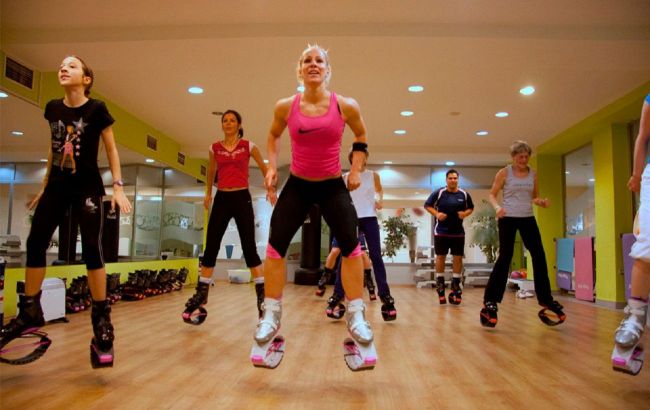Think Kangoo Jumps are fun? Here's why they might be risky
 Photo: How dangerous Kangoo Jumps workouts can be (fitcurves.org)
Photo: How dangerous Kangoo Jumps workouts can be (fitcurves.org)
Kangoo Jumps are one of the most controversial forms of cardio exercise, especially for women. Despite their seemingly safe and fun atmosphere, from the perspective of biomechanics, neuromuscular response, and pelvic floor muscle (PFM) health, these workouts raise serious concerns among specialists. Ukrainian biologist and nutritionist Snizhana Voroshylova explained on Instagram why such workouts can be dangerous for women.
What you need to know about these popular workouts
Kangoo boots do reduce direct impact on the joints, but they do not change intra-abdominal pressure dynamics, which are critical for pelvic floor health.
Snizhana warned that for most women, especially those who already have related issues, Kangoo Jumps can pose a real risk.
How Kangoo Jumps affect internal organs
Kangoo Jumps are a high-impact, repetitive activity. While the special boots provide excellent cushioning for the knees and feet, the internal organs and pelvic floor are exposed to inertial forces during jumping, which can be harmful:
- Landing: When the body comes to a sudden stop, the internal organs keep moving and push down on the pelvic floor.
- Pushing off: the body propels upward, the organs move up as well, then abruptly drop down again, creating additional pressure on the pelvic floor.
The amplitude of these uncontrolled organ movements depends on the strength of your connective tissue, as visceral ligaments are what hold the organs in place.
Thousands of impacts per workout
A Kangoo Jumps session is built entirely on continuous "push-off – flight – landing" cycles, repeated thousands of times in a single class, at a rate of 120-150 impacts per minute. This constant, high-frequency vibration and internal movement put enormous stress on the body:
Overloading of visceral ligaments
These ligaments that support the internal organs stretch and weaken over time.
Fatigue of pelvic floor fascia
The connective tissues that form the "hammock" of the pelvic floor lose their elasticity and resilience.
Excessive strain on the levator ani muscles
The main pelvic floor muscles remain under constant stress, which can lead to both hypertonicity and weakening.
The spring effect of the special shoes does make jumping easier and allows for greater height. However, upon landing, even though the legs absorb the shock, the internal organs (liver, stomach, uterus, bladder) continue their downward motion.
In other words, while the knees and feet are protected, the pelvic floor still takes an invisible but significant wave-like impact that deeply affects the internal structures.
"High-impact workouts, even on cushioned surfaces, can be conditionally safe only for women with a well-trained pelvic floor. However, in cases of incontinence, prolapse, or pelvic pain, they are prohibited until full stabilization," physiotherapists warn.
This material is for informational purposes only and should not be used for medical diagnosis or self-treatment. Our goal is to provide readers with accurate information about symptoms, causes, and methods of detecting diseases. RBС-Ukraine is not responsible for any diagnoses that readers may make based on materials from the resource. We do not recommend self-treatment and advise consulting a doctor in case of any health concerns.

